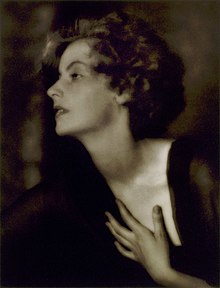There’s been a lot of talk of change and unity for months now, but what is really bringing the nation together this summer is dissing the “Sex in the City” movie.

It wasn’t as bad as I thought it would be after reading the reviews and taking in David Hughes’ full-page New Yorker grotesquerie of the four main actresses. Based on that image I expected to be assailed by the cinematic equilvalent of a gnashing and screeching pack of harpies (and if I were a guy, after glimpse of Hughes’ depiction of Nixon and Davis’ giant teeth, I would have been fearful of something else). Set up for this, the movie was not as terrible as I thought it would be—just pretty stupid, and an hour too long. But something Anthony Lane wrote about the dragging, two-and-a-quarter hour movie in that same New Yorker issue was right on.
“When Garbo made ‘Anna Karenina,’ in 1935, she got happy, unhappy, loved, left, and under the train in less than a hundred minutes, so how the hell are her successors supposed to fill the time?” (Sorry for the spoiler about the train, if you didn’t know.)

In the week before I saw “Sex and the City,” I fell under the spell of Garbo at a screening at the Coolidge Corner theater. This was silent film as it was meant to be seen: on a large screen in a gorgeous art deco movie house, with live music. “Flesh and the Devil,” made in 1926, is one of the sexiest movies I’ve ever seen, though of course there are no sex scenes in it. As Mordaunt Hall (is that a pseudonym?) wrote in his 1927 Times review, “It is a story of passionate love for a woman and the friendship of two men who, as boys, like the knights of old had mixed their blood; their friendship is the conquering power over their blazing affection for a conscienceless creature.”
This conscienceless creature is of course Garbo. The camera and both of the leads make love to her. She stands by the window during a rain storm and the shadows of water trails slide down her neck. Meaningful cigarettes are exchanged and smoke billows languidly. It reminded me of movies produced in Bollywood, where until pretty recently depicting men and women kissing was scandalous (so my first-gen buddies, who exposed me to these movies, told me). Instead of sex scenes, dreamlike song-and-dance routines in golden fields.
Where “Sex and the City” will just show you a naked model in the shower, “Flesh and the Devil” bathes its actors in streams of light from a church window. In what must be the most sensual communion ever depicted on screen, the married Garbo turns the wine goblet in the priest’s hand in order to sip from the same place where her husband’s best friend, kneeling next to her, placed his lips just a moment before.
The Wind-Up's Adab and I couldn’t quite get a read on what the message of this movie was supposed to be. Was Garbo a symbol of demonic forces, with her fugue of madness in the second to last act as her virtuous sister-in-law prays in the light streaming through another window? With his cigar holder in the form of a naked winged woman and his squinty eyes, the priest doesn’t seem like a good guy either. It’s difficult to accomplish because Garbo is so charismatic, but the movie vilifies her character, and when she falls through the ice of a lake at the end of the movie, I think we’re supposed to be happy that, with the death of the woman they both love, the mens’ friendship—which, in the exagerrated gestures of silent cinema, seems to these 21st century eyes to have homoerotic undertones—will be back on solid ground.
You might feel like you need to give the classics their due, and rent a silent movie, only to find yourself writhing on the verge of boredom as you try to stay with the plot on your tiny laptop screen. You need to give the experience another chance. When your local independent movie theater or art museum offers up Rudolf Valentino or Greta Garbo on the big screen with live musical accompaniment, you need to go out there and drop your $9.75. When you see them as they were meant to be seen, these movies have a sensuality that is pretty much unmatched by anything at the multiplex.
David Hughes image taken from the New Yorker website with many thanks. Please don't sue the wind-up blog, which hopes that this is fair use and that everyone will read your wonderful magazine. Garbo image from wikimedia commons, photograph taken in 1925 by Arnold Genthe.
1 comment:
Great post! I haven't stopped thinking about that movie, especially the strange death scene. Why did it take her death to put the friendship back on solid ground? It meant her spell over the friends was finally broken, but is there some message about the free will of men? It's always tempting to think about what a movie like this says about women, but what about the men? Powerless in the presence of a woman, to the point of trying to kill each other?? In any case, I completely agree that it's well worth viewing!
Also, I love your comparison to the Sex and the City movie. I've been on a "bring back the art of seduction" kick, also known as "bring back the tease". Subtle not salacious, nuance not raunch, hints not let it all hang.
Post a Comment